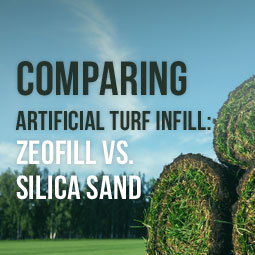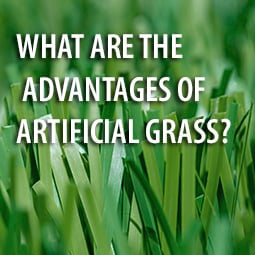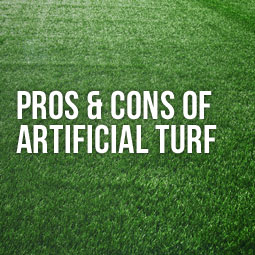 The type of infill material you choose for your artificial turf will be determined by what types of activity you anticipate will occur on the artificial turf lawn. Certain types of infill offer specific benefits like odor control, increased permeability and additional cushion and resiliency. Once you know what types of activity you will be playing host to, you can choose the type of infill that will best suit your needs.
The type of infill material you choose for your artificial turf will be determined by what types of activity you anticipate will occur on the artificial turf lawn. Certain types of infill offer specific benefits like odor control, increased permeability and additional cushion and resiliency. Once you know what types of activity you will be playing host to, you can choose the type of infill that will best suit your needs.
ZeoFill
ZeoFill is a form of zeolite. Unlike traditional zeolite, Zeofill has been sifted and separated from the small, jagged pieces of crystal that can be harmful to people, pets, and the materials used in the construction of the artificial turf. There are many types of zeolites with each offering different amounts of quartz. Zeofill, like other types of infill, helps to secure and stabilize the blades of artificial turf, helps water to disperse easily through to the permeable fabric underneath, and can also control pet odors. Zeofill is made of natural volcano ash that can help to control the surface temperature of the artificial turf where it is used.
Silica Sand
Silica sand is a common infill choice for lawns, playgrounds and recreational areas that have artificial turf. While it is extremely effective as a stabilizer and can help blades remain upright, it can become easily compacted when it gets wet. It can also hold heat if exposed to the sun for long periods of time. This can increase the surface temperature of the artificial turf, making it uncomfortable to walk or play on. Silica sand can be mixed with other types of infill in a 50/50 ratio to help stabilize the turf and prevent the other material from settling. Silica sand normally does not hold pet odors, but when combined with other types of material it may need to be rinsed occasionally to prevent any residue from building up and possibly staining the turf itself.
DuraFill is a synthetic form of sand that can be used with silica sand, ZeoFill or other types of infill to produce an effective material that allows water to flow through easily, control pet odors, and offer both cushion and resiliency. When combined with other types of infill, DuraFill can also help to control the surface temperature of artificial turf and recreational areas where it is used. With regular rinsing, DuraFill is also helpful in controlling pet odors and reducing the build up of residue.
Combinations of Different Types of Infill Materials
Both silica sand and Zeofill work well when combined with other types of materials. By combining different types of material, you get the best of both worlds. If you have pets, it is an ideal way to control pet odors as well as keep the surface of the turf cool to the touch and comfortable for both pets and children to play on. If you are using the turf for putting greens or other sporting areas, the right combination of silica sand, thatch or Zeofill can help to control ball roll and make the field much tolerant of heavy traffic and aggressive play. Silica sand is extremely affordable and can be used by itself or in combination with another material. Because it is rather lightweight, it may have to be replenished over time due to constant use or high winds.
Choosing the right type of infill material is important if you want to get the most out of your artificial lawn. Talk to your landscaper to find out the basics of blending specific types of infill. Both silica sand and ZeoFill forms of infill offer substantial benefits. Knowing which ones will work in your own personal lawn will help you decide what combination will be most effective.











